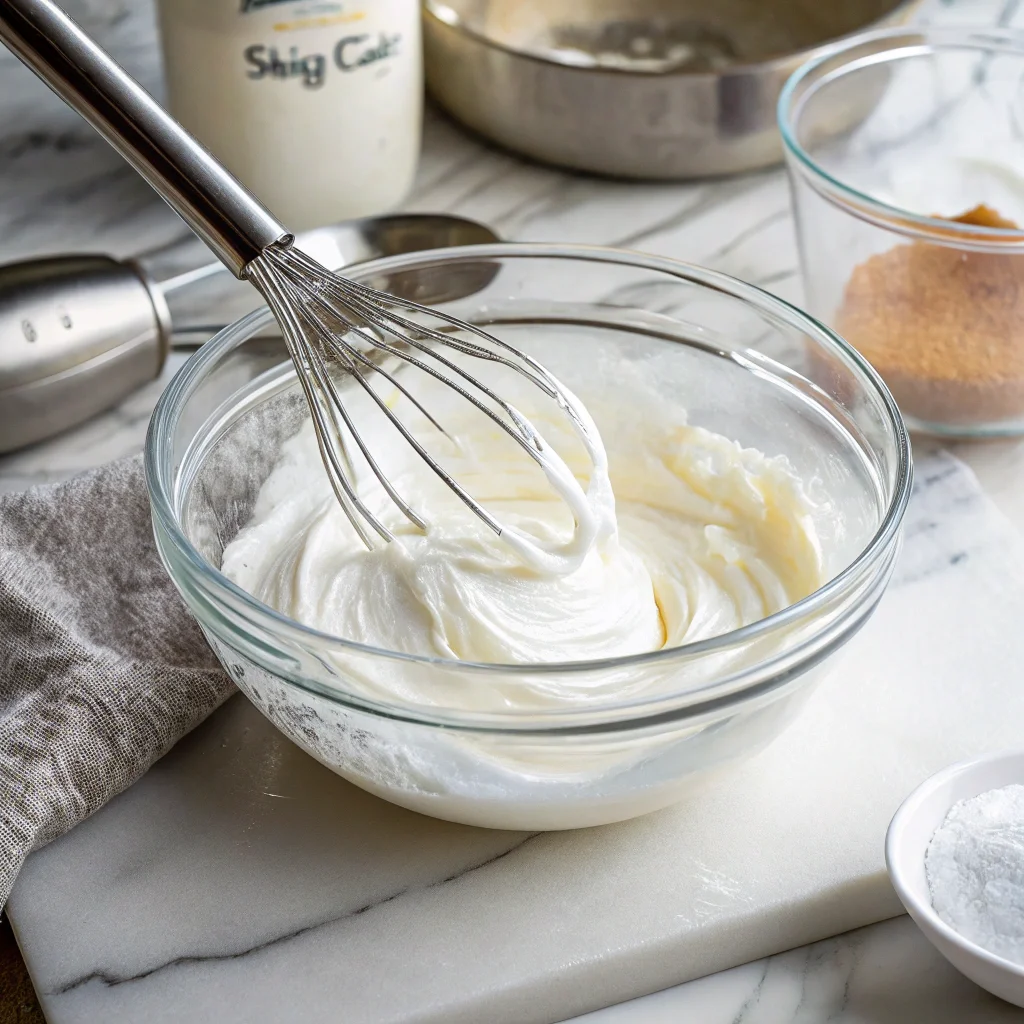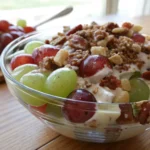If you’ve ever seen a towering stack of souffle pancakes on social media and wondered how to make them, you’re in the right place. These light, airy, and cloud-like pancakes are a staple in Japanese cafes, and now you can recreate them at home. This detailed souffle pancake recipe will walk you through every step, with tips and tricks to ensure you achieve that perfect fluff.
Table of Contents
What Are Souffle Pancakes and Why Are They So Popular?
Souffle pancakes are a delightful twist on traditional pancakes, boasting an incredibly soft texture that melts in your mouth. Their signature fluffiness comes from whipped egg whites, which are carefully folded into the batter.
Not only are they delicious, but they also make a visually stunning breakfast or dessert. Whether topped with fruit, syrup, or powdered sugar, souffle pancakes are as indulgent as they are Instagram-worthy.
Why This Recipe Matters
- Master the art of souffle pancakes without special equipment.
- Understand the science behind the fluffiness.
- Impress friends and family with a professional-quality dish.
“If you’re exploring more pancake variations, this baby pancake recipe might interest you.”
Ingredients for the Perfect Souffle Pancake Recipe
To create the best souffle pancakes, you’ll need a handful of simple ingredients. Each plays a crucial role, so ensure you measure accurately.
| Ingredient | Quantity | Purpose |
|---|---|---|
| Eggs (large) | 2 (separated) | Egg whites create structure; yolks add richness. |
| Milk | 2 tablespoons | Adds moisture for a smooth batter. |
| All-purpose flour | 3 tablespoons | Forms the base structure. |
| Baking powder | ½ teaspoon | Helps the pancakes rise. |
| Granulated sugar | 2 tablespoons | Sweetens and stabilizes the meringue. |
| Vanilla extract | ½ teaspoon | Enhances flavor. |
| Butter or cooking oil | As needed | Prevents sticking during cooking. |
Step-by-Step Souffle Pancake Recipe
1. Preparing the Egg Yolks
In a medium bowl, whisk together the egg yolks, milk, and vanilla extract. This mixture should be smooth and well-combined.
- Gradually sift in the all-purpose flour and baking powder.
- Stir gently until you achieve a lump-free batter. Avoid overmixing.
2. Whipping the Egg Whites

To achieve the iconic souffle pancake fluff, properly whipped egg whites are essential.
- Place the egg whites in a clean, dry bowl. Use a hand or stand mixer to beat them on low speed until foamy.
- Gradually add the granulated sugar, one tablespoon at a time, while increasing the speed.
- Continue mixing until you see stiff peaks that hold their shape when the whisk is lifted.
Tip: Ensure your mixing bowl is free of grease; even a small amount can prevent the whites from whipping properly.
3. Folding the Meringue Into the Batter
Folding the meringue requires a gentle touch.
- Add one-third of the whipped egg whites into the yolk mixture. Stir gently to lighten the batter.
- Fold in the remaining egg whites in two batches, using a spatula to combine them with a scooping motion.
- The final batter should be airy and well-mixed but not deflated.
4. Cooking the Souffle Pancakes
Cooking these pancakes correctly is the key to maintaining their height and fluff.
- Heat a non-stick pan over the lowest possible setting. Grease lightly with butter or oil.
- Scoop batter onto the pan, forming tall mounds. You can use a piping bag or spoon for precision.
- Cover the pan with a lid and cook for 3-4 minutes. Flip gently using a spatula, then cook the other side for another 3-4 minutes.
Tip: If you’re struggling to keep the pancakes tall, use ring molds for added support.
5. Serving Your Souffle Pancakes
Once cooked, serve the pancakes immediately.
- Dust with powdered sugar or drizzle with maple syrup.
- Add toppings like fresh berries, whipped cream, or even a dollop of ice cream for a dessert version.
Kitchen Tools and Equipment You’ll Need
To start making souffle pancakes, you need the right tools. You’ll need a whisk, rubber spatula, and a non-stick pan. These tools make cooking pancakes easier and faster.
There are also optional tools that can improve your pancakes. A stand mixer, hand mixer, and measuring cups and spoons are helpful. They help you mix and measure ingredients accurately, leading to perfect pancakes.
Here are some key tools you’ll need to start:
- Non-stick pan
- Whisk
- Rubber spatula
- Stand mixer or hand mixer
- Measuring cups and spoons
Investing in these tools will help you make delicious souffle pancakes. With the right tools and practice, you’ll soon be a pancake expert.
| Kitchen Tool | Description |
|---|---|
| Non-stick pan | Essential for cooking souffle pancakes |
| Whisk | Used for mixing ingredients |
| Rubber spatula | Used for scraping the sides of the bowl and folding ingredients |
The Science Behind the Fluff: Why Whipped Egg Whites Matter
The secret to the iconic souffle pancake texture lies in properly whipped egg whites. These create the essential structure and aeration needed for the pancake’s incredible height and softness. Let’s dive into the chemistry of why whipped egg whites matter and how they transform your batter into a cloud-like masterpiece.
How Whipped Egg Whites Work
When you beat egg whites, you’re incorporating air into the liquid protein matrix. This process creates a foam made up of millions of tiny air bubbles surrounded by a film of proteins. These proteins (primarily ovalbumin and conalbumin) play a critical role by:
- Stabilizing the foam as air is incorporated.
- Strengthening as they are heated, locking the air bubbles in place.
Here’s how the process unfolds step by step:
- Foaming: At the start, the whisk agitates the egg whites, unraveling protein molecules.
- Bubble Formation: The proteins stabilize around the air bubbles, preventing them from collapsing.
- Stiff Peaks: As whipping continues, the foam becomes more stable, reaching the stage where the structure can hold its shape.
Data on Egg White Whipping Times
The consistency of your whipped egg whites is crucial for the success of souffle pancakes. Over-whipping or under-whipping can significantly affect the final product.
| Whipping Time | Egg White Consistency | Impact on Pancakes |
|---|---|---|
| 0-1 minutes | Foamy | Too weak, pancakes won’t rise. |
| 1-3 minutes | Soft Peaks | Slight rise, pancakes lack height. |
| 3-5 minutes | Stiff Peaks | Ideal for maximum fluff. |
| 6+ minutes | Over-whipped | Foam breaks down, pancakes collapse. |
Why Room Temperature Eggs Are Better
Using room temperature eggs can make a noticeable difference in the quality of your whipped egg whites. At room temperature, the proteins in the egg whites are more relaxed, allowing them to stretch and trap air more effectively. This results in:
- Faster whipping times.
- A more stable foam.
- Greater volume.
Pro Tip: If your eggs are cold, submerge them in warm water for 5-10 minutes before separating the whites and yolks.
The Role of Sugar in Stabilizing Meringue
Adding sugar to egg whites helps stabilize the foam by:
- Strengthening the protein structure surrounding the air bubbles.
- Slowing down the whipping process to prevent over-beating.
To understand this better, let’s compare the results of whipping egg whites with and without sugar:
| With Sugar | Without Sugar |
|---|---|
| Stable, glossy peaks form. | Peaks collapse quickly. |
| Air bubbles are evenly distributed. | Air bubbles are irregular. |
| Pancakes rise uniformly. | Pancakes may deflate. |
Pro Tip: Add sugar gradually after the egg whites have started to foam, rather than all at once.
Heat and Protein Denaturation
During cooking, the heat causes the proteins in the egg whites to denature, or unfold. This process solidifies the foam, locking the air bubbles in place and ensuring the pancakes maintain their height.
Here’s how heat interacts with the whipped egg whites in your souffle pancake recipe:
- At 60°C (140°F): Proteins start to denature and solidify.
- At 70°C (158°F): The foam stabilizes, holding its structure.
- Above 85°C (185°F): Overcooking can cause the structure to shrink as water is expelled from the foam.
Common Issues and How to Fix Them
- Under-whipped Egg Whites
- Problem: The foam is too soft, leading to flat pancakes.
- Solution: Whip until you achieve stiff peaks, where the foam holds its shape without drooping.
- Over-whipped Egg Whites
- Problem: The foam becomes dry and grainy, causing it to collapse.
- Solution: Stop whipping as soon as stiff peaks form. If over-whipped, add a fresh egg white and mix gently.
- Deflated Batter
- Problem: Aggressive mixing breaks the air bubbles, resulting in dense pancakes.
- Solution: Gently fold the meringue into the batter with a spatula, using a scooping motion.
How Whipping Techniques Impact Final Results
The technique you use to whip egg whites can directly impact the texture of your souffle pancakes.
| Technique | Effect on Pancakes |
|---|---|
| Hand Whisking | Time-consuming, less stable foam. |
| Electric Hand Mixer | Quick, consistent foam formation. |
| Stand Mixer | Most efficient, ensures uniformity. |
Practical Tips for Perfect Egg Whites Every Time
- Clean Equipment: Any grease or residue can prevent the whites from whipping properly. Wash bowls and utensils thoroughly.
- Avoid Egg Yolk Contamination: Even a small amount of yolk can inhibit foam formation.
- Add an Acidic Ingredient: A pinch of cream of tartar or lemon juice can help stabilize the foam.
By understanding the science behind whipped egg whites, you’re not just following a souffle pancake recipe — you’re mastering a technique that can elevate many desserts. With these insights, your pancakes will rise to new heights, both literally and figuratively.
Common Mistakes and How to Avoid Them
Even with the best recipe, there are pitfalls to watch out for. Here’s how to sidestep them:
- Deflated Meringue
- Overmixing the batter can break the air bubbles. Fold gently for the best results.
- Burnt Pancakes
- Use low heat to avoid burning the exterior while ensuring the interior cooks through.
- Flat Pancakes
- Make sure your egg whites are whipped to stiff peaks before folding them in.
Customizing Your Souffle Pancakes
Want to put your own spin on this classic? Try these variations:
- Matcha Souffle Pancakes: Add 1 teaspoon of matcha powder to the batter.
- Chocolate Souffle Pancakes: Mix 1 tablespoon of cocoa powder with the flour.
- Lemon Souffle Pancakes: Add 1 teaspoon of lemon zest and a squeeze of fresh lemon juice.
For a twist, check out this pancake recipe without eggs, which offers a different approach to making delicious pancakes
“Alternatively, try these buckwheat and quinoa flour pancakes for a healthier spin on traditional pancakes.”
FAQs About Souffle Pancakes: Answers to Your Top Questions
What is the difference between a pancake and a soufflé pancake?
Traditional pancakes are flatter and denser, with a texture similar to a quick bread. They rely on baking powder or baking soda for leavening.
In contrast, soufflé pancakes are much taller, fluffier, and lighter due to the incorporation of whipped egg whites. These whipped whites create a foam structure, which expands during cooking, giving the pancakes their signature height and airy texture.
Why is my soufflé pancake not fluffy?
Several factors can cause your soufflé pancakes to lose their fluff:
- Under-whipped Egg Whites: If the whites aren’t beaten to stiff peaks, they can’t hold enough air.
- Over-folding the Batter: Mixing too aggressively can deflate the air bubbles.
- High Cooking Temperature: Cooking at high heat can cause the outside to cook too quickly, collapsing the interior.
To achieve fluffiness, whip egg whites to stiff peaks, fold gently, and cook on low heat.
How do you keep soufflé pancakes from deflating?
Deflation often happens when the foam structure collapses. To prevent this:
- Use Low Heat: Slow cooking ensures the pancakes set gradually without collapsing.
- Support the Batter: Use ring molds to help pancakes hold their shape.
- Serve Immediately: Soufflé pancakes are best enjoyed fresh, as they naturally settle over time.
What do soufflé pancakes taste like?
Soufflé pancakes have a subtly sweet flavor with a soft, custard-like texture. They are often compared to a lighter version of a sponge cake. When paired with toppings like syrup, fresh fruit, or whipped cream, their delicate taste becomes even more delightful.
What is the secret to a good soufflé?
The key to a perfect soufflé lies in creating a stable meringue. Follow these tips:
- Room Temperature Eggs: They whip faster and hold air better.
- Stable Foam: Add sugar gradually to strengthen the meringue.
- Gentle Folding: Avoid deflating the air bubbles when combining ingredients.
Timing and patience are crucial, as soufflés rely on precise preparation and immediate serving for the best results.
What makes restaurant pancakes taste so good?
Restaurant pancakes often have a richer flavor and softer texture due to:
Additional Ingredients: Restaurants often use melted butter, vanilla extract, or extra sugar for a more indulgent taste.
Buttermilk: Adds tanginess and tenderness.
Even Heat: Professional griddles ensure consistent cooking.
Conclusion About the Souffle Pancake Recipe
Discovering the perfect souffle pancake recipe at home is easy. Mastering the meringue technique and following our guide will help you. You’ll soon be making fluffy Japanese pancakes that wow everyone.
The journey to perfect these treats is as fun as the end result. It’s all about the process and the joy of cooking.
Let your creativity shine with unique toppings and presentations. Try fresh fruits, rich sauces, and fun garnishes. Each bite will be a journey to Japan’s culinary heart.
So, what are you waiting for? Get your ingredients ready and start cooking. Your taste buds and kitchen will thank you. Bon appétit!





